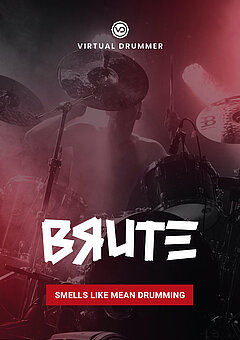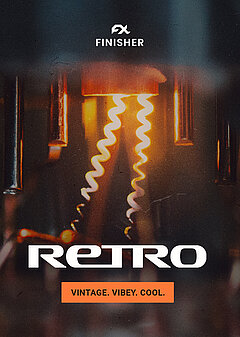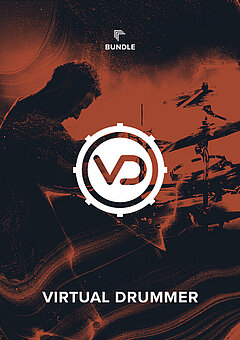How to Make Grunge
Nail the emotional and iconic sound of grunge step-by-step, mastering one of the most challenging genres in modern history
SEPTEMBER 26TH, 2021
Getting the sound just right
Grunge is a very emotional genre, born in part out of socially aware lyrics and introspection. This means you’ll usually want to add lyrics, but even if that’s not the case you’ll need to conjure up plenty of angst and intensity! Otherwise, it won’t hit as hard as you want it to. With that in mind, let’s look at some of the essential elements:
The genre has its roots in punk rock and heavy metal, taking the distorted electric guitar sounds from both with a few twists. Without losing heaviness and aggression, grunge is usually looser, less structured and slower overall. The vocals feel very ‘lazy’ and drawn out in spite of their passion, which is a difficult balance to strike except at the hands of an excellent vocalist.
While not a requirement, some grunge songs contain huge swings in volume and emotion, reminiscent of Baroque-era music. Nirvana was masterful at this, such as in their song Heart-Shaped Box:
When in doubt, let out all your angst and see where it takes you! Find a riff or melody and start building from there. Let’s take a look at how to build out your ideas further with chords and harmony.
Chords and harmony
Grunge contains some of the most widely varying chord progressions of a genre, as you’ll notice by listening through the Grunge Forever playlist on Spotify. There’s little to no common ground between Stone Temple Pilots’ Plush, Pearl Jam’s Alive and Temple Of The Dog’s Hunger Strike. You expect certain chord resolutions but never get them; find sudden switches between major and minor tonalities; and have a healthy mix of power chords, major sevenths and non-triadic chords. With most genres we can offer more specific guidance, but when writing grunge you really need to feel it!
While there are few guidelines to follow, the genre uses a ton of ‘borrowed’ chords (such as bVII in major keys, like Ebmaj when in the key of F major). This creates a meandering, destabilized vibe that further contributes to the rebellious, angsty feel often heard all across the spectrum of grunge. When in doubt, use your ear to copy progressions from some of your favorite songs and make changes until it’s no longer clear what song you started with — this can be much faster than starting from scratch!
Rhythm and groove
You can’t go wrong starting with a bpm of roughly around 140 — this seems to be a good common point that nicely suits grunge’s unique combination of simultaneously laid-back and aggressive vibes. As with much of the broader scope of rock and metal, the snare typically hits on beat 3 every measure, or on beats 2 and 4 if you opt to double-time the rhythm (plus occasional offbeats and fills). Shoot for a snare tone that has a lot of splashiness and mid-range air, catching the broadband noise from the actual snare on the bottom of the drum, with a meaty fundamental body tone. A thick snare is essential to capture the emotional rawness you’re looking for.
Kick drum patterns are more interesting; listen carefully and you’ll find they mimic the rhythm of the vocal melody and/or the bass guitar. As a result, there’s not much of a common pattern to fall back on. When you’re starting off, you can default to kick on beat 1 and snare on beat 3 (or kick on beats 1 and 3, snare on beats 2 and 4 if you’re using double time), then the kick additional eighth notes wherever it feels appropriate. See what you come up with when you’ve built out more of the overall groove of the song, and then choose any rhythmic doublings that feel appropriate.
Since it’s come up a couple of times, note that choosing regular time or double time for the kick and snare has a major effect on the feel of the song. Regular time is more relaxed, while double time is more driving by nature and better-suited to high-energy songs — of course, in the end, it all comes down to preference! If you want to pull from an easy grab-bag of grunge-focused drum grooves that you can quickly tweak and manipulate (both the effects and the rhythms themselves), try out UJAM’s Virtual Drummer BRUTE — the MIDI Drag & Drop feature makes sure you never have to start drum grooves from scratch, without giving up control!
Production style
Punch always matters with rock (especially in the kick and snare), but with grunge it’s also important to appropriately apply distortion across a ton of different tracks. The electric guitars have a harsh, ‘grungy’ bite and noisy timbre, sometimes with a bit of flanging, which adds complexity and also cleans up the sound slightly (flanging removes specific frequencies, while various types of distortion add them, allowing you to sculpt the sound back and forth). Many intros and interludes have a cleaner sound, but that’s partly because each guitarist is only playing one note at a time; the effect becomes far more noticeable when chords are introduced because there’s more clutter in the frequency spectrum for the distortion to mangle.
You don’t necessarily need much distortion on drums, and in some cases even the tiniest bit is way too much — instead, you can use very mild soft saturation to round out the transients, or even better, you can pull up a console or vinyl emulation if you have one available (a plugin designed to imitate the effect of driving an audio signal through an analog mixing console, which naturally creates a very transparent form of saturation). Many plugin manufacturers have great emulations, though you also can get a nice result from gentle mixing in the Old Record preset in UJAM’s Finisher RETRO. Overall, it’s often best to aim for a muffled, messy sound while still preserving the transients and pulse — essentially, give your song plenty of dirt without obliterating its dynamics.
Mixing
How you treat the vocals in grunge is everything — the lyrics are the backbone of the emotional impact of the entire genre! Bring them to the front, and be sure not to bury them. Open up space for them by EQ’ing out important vocal ranges in other tracks, particularly around the fundamental frequency range and the ‘clarity’ range (around 4kHz). If they need some extra help, you can gentle boost those ranges in the vocalist’s tracks; add some upper energy with a high shelf EQ if needed, as you typically want the vocals to be a huge part of this frequency spectrum in your mix. Add a good measure of compression and saturation, or better yet, a compressor that naturally saturates the audio that runs through it. Analog-modeled compressors are typically a good play here.
Electric guitars are the foundation of most grunge; don’t be afraid to push the distortion to the max and simply back off a little at the end. A variety of types will work, but avoid anything ‘hissy’ or with a lot of high end. Post-distortion, they often like to see an EQ boost around 5kHz and/or 7kHz, giving them a bite that cuts through the mix (though it’s easy to overdo this and make them too harsh). Compress heavily and don’t look back!
Bass is simple to mix in theory but often requires a lot of back and forth tweaks to get it to sit well with the drums; look at where the bass is concentrated, then cut a bit of that area from the drums to help it come through. Bring out the high frequencies of the bass so you can hear the twang of the strings, then compress everything to make the low end volume extremely consistent. The root note should always be firm so you can build a stable mix on its foundations. Leave the dynamics for the vocals, guitars and drums!
Drums will make up much of your high end, particularly the cymbals and hi hats (the rest of it should be concentrated in the vocals and a little of the electric guitars) along with a bit of the snare transient and body. Add some room verb if need be, creating a small space (think of a single-story garage home recording studio, or let loose and make it feel like a concert hall — try to steer toward one or the other, depending upon how you feel in the moment). Compress heavily once again, with a short release to bring up the sound of the room and create a ‘wall of sound’ vibe.
Wrapping up
Grunge is a fun genre to create, but the challenge isn’t as much a technical matter as it is creative. It requires a lot of emotion, and if your heart isn’t in it, that will be obvious to your listeners. Start with a theme you feel deeply and riff on it until you have a version you can be proud of, either on the guitar or with your own vocals. Non-vocal grunge is certainly an option, but you’ll get a lot more depth by introducing vocals if possible.
There are few genres with as wide a range of chord progressions and production styles as you’ll find in grunge, affording you many creative and rewarding liberties when writing. Even more so than with other genres and projects, don’t limit yourself to your original ideas; experiment and allow the sound to evolve, broadening your influences and the ultimate destination. Above all, have fun — and when you need inspiration, you need to look no further than the classics!
Stay up to date
Sign up and we’ll send you an e-mail with product news and helpful stuff every now and then. You may unsubscribe at any time.
Defy Limits
We develop software solutions that enable people to create, consume and interact with music.




